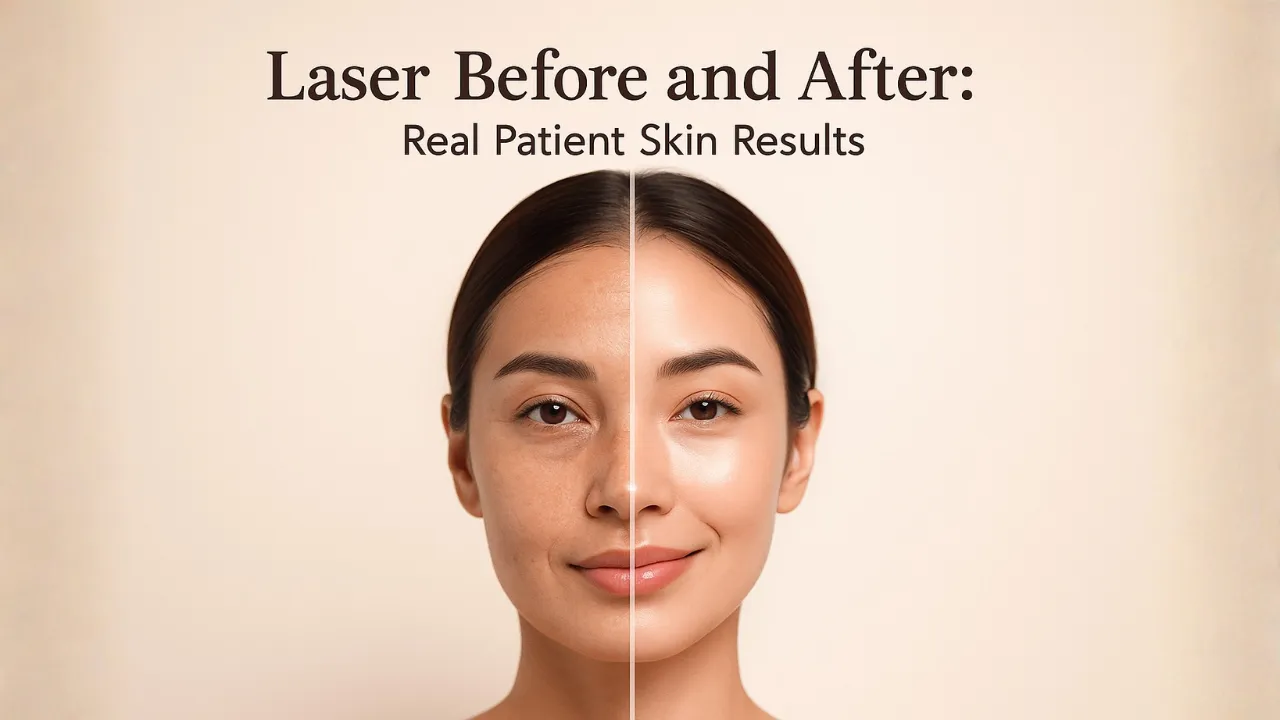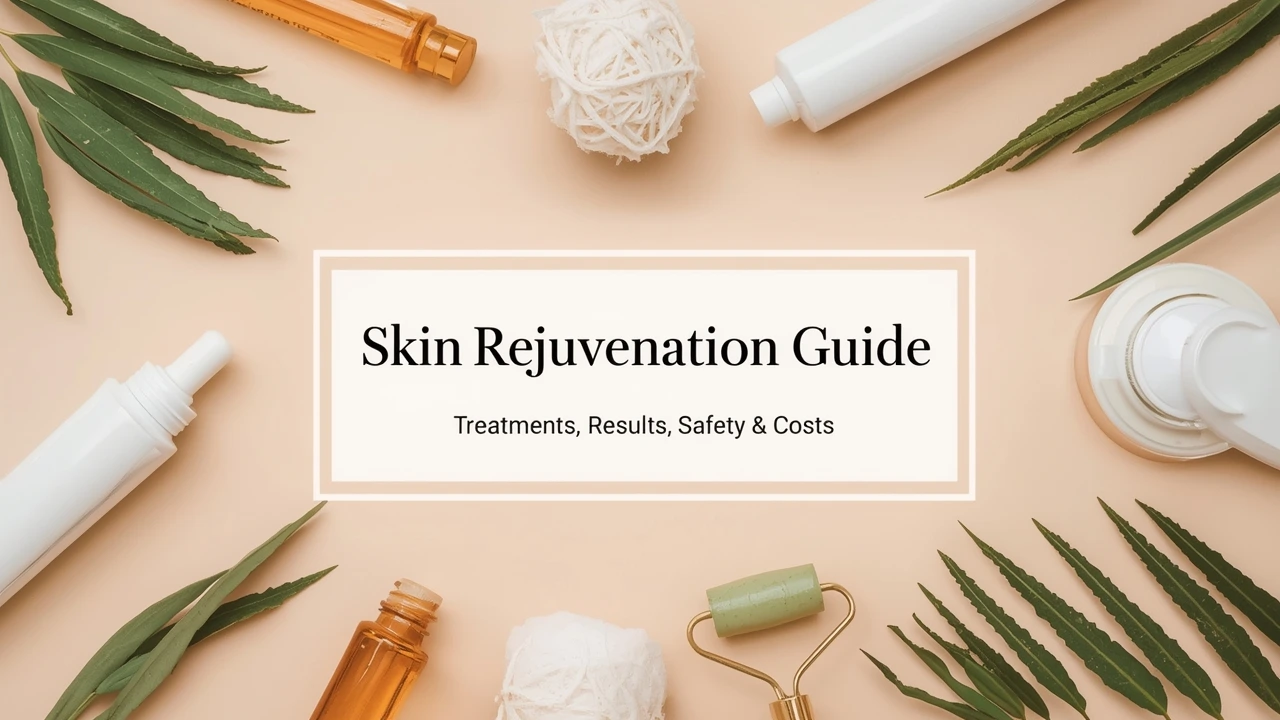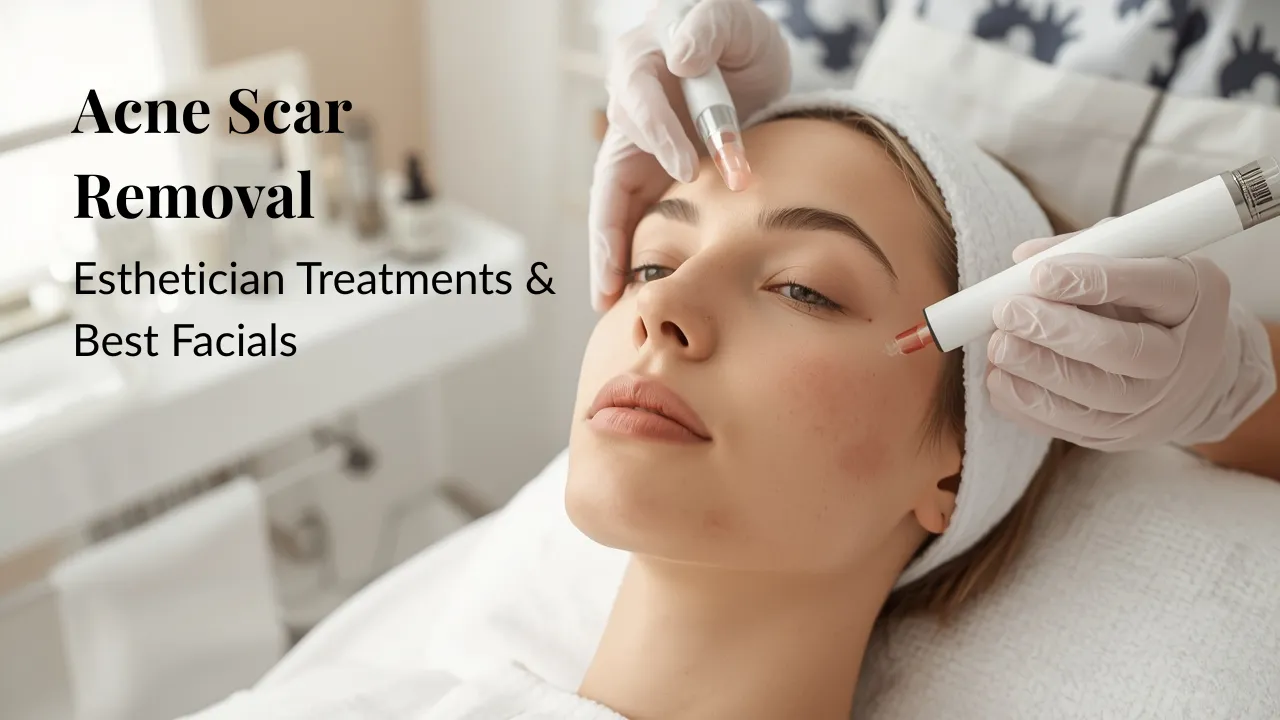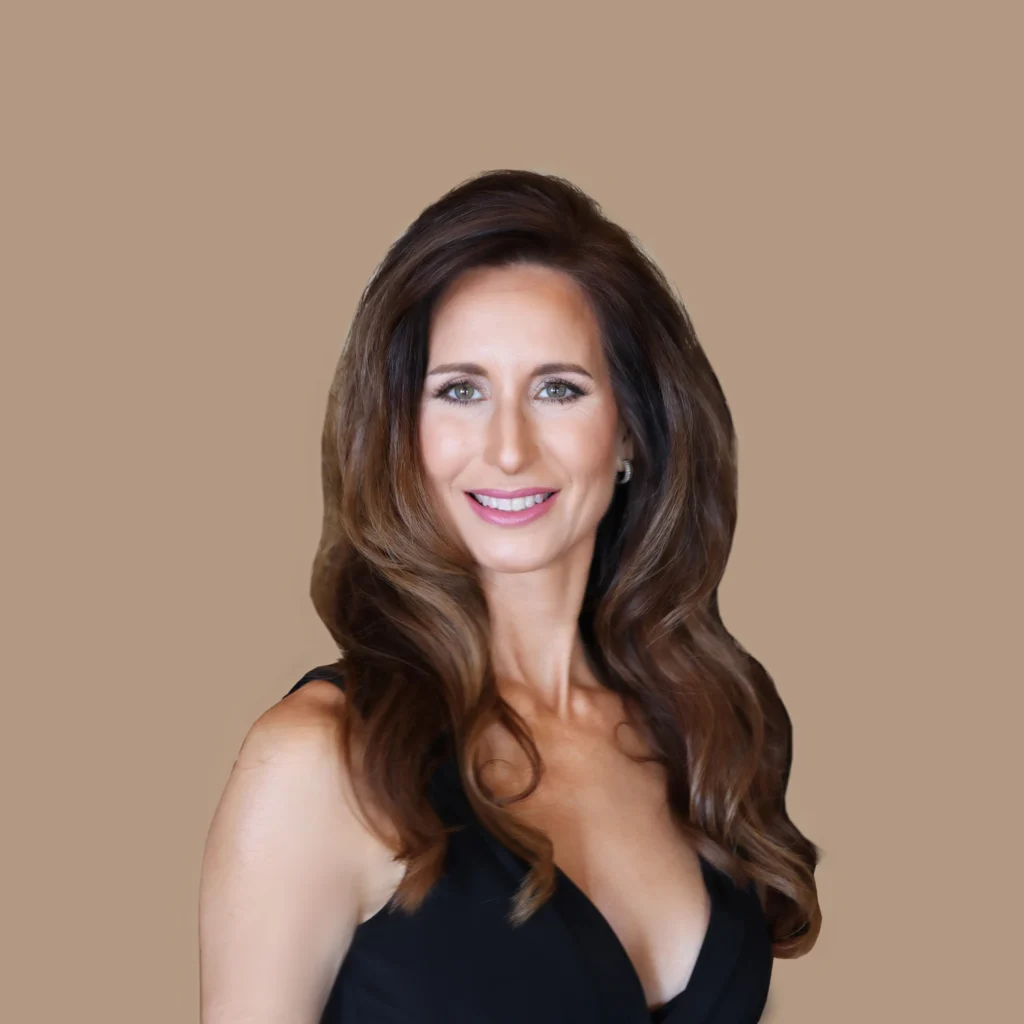

Radiant, youthful skin has always been a symbol of health and confidence. But over time, natural aging, sun exposure, lifestyle choices, and environmental factors can leave skin looking dull, uneven, and tired. This is where skin rejuvenation comes in — a range of treatments designed to restore skin’s vitality, improve texture, and reduce visible signs of aging.
Unlike basic facials or over-the-counter creams, professional skin rejuvenation treatments use advanced technologies like laser therapy, microneedling, IPL (intense pulsed light), and chemical peels to deliver deeper, longer-lasting results. From reducing fine lines and wrinkles to treating pigmentation and acne scars, these therapies are among the most sought-after solutions in cosmetic dermatology.
Skin rejuvenation refers to medical and cosmetic procedures that improve skin quality by targeting concerns such as wrinkles, pigmentation, scars, enlarged pores, and uneven tone. These treatments focus on stimulating collagen and elastin production — the essential proteins that keep skin firm, smooth, and youthful.
As we age, collagen production decreases, skin loses elasticity, and cell turnover slows. Treatments like laser skin rejuvenation or radiofrequency tightening create controlled micro-injuries in the skin or apply energy-based stimulation. This encourages the body’s natural healing response, leading to fresher, firmer, and healthier-looking skin.
In short, skin rejuvenation is not just about looking younger — it’s about restoring skin health and confidence.
Modern skin rejuvenation combines medical expertise with advanced technologies to address different skin concerns. Below are the most common and effective options available in clinics today.
Dermal fillers are gel-like substances, often made of hyaluronic acid, that are injected under the skin to restore lost volume, smooth wrinkles, and enhance facial contours. They are especially effective for smile lines, under-eye hollows, and lip enhancement. Depending on the formula, fillers can last 6 months to 2 years.
PRP therapy, also known as the “vampire facial,” uses the patient’s own blood plasma, rich in growth factors, to stimulate collagen and tissue regeneration. It is frequently combined with microneedling for skin rejuvenation, boosting the results by improving skin tone, reducing scars, and encouraging natural healing.
Laser skin rejuvenation is one of the most popular and effective treatments for reducing fine lines, wrinkles, scars, and uneven pigmentation. It works by directing concentrated beams of light at the skin, encouraging new collagen formation. Ablative lasers remove the outer layer of skin for dramatic results but require longer recovery time. Non-ablative lasers penetrate deeper without damaging the surface, offering subtle improvements with minimal downtime. Fractional lasers treat small sections of skin at a time, which reduces healing time while still delivering visible improvements. Patients often see results after just one session, though multiple treatments may be recommended.
Unlike lasers that use a single wavelength, IPL skin rejuvenation uses multiple wavelengths of light to target pigmentation, redness, broken capillaries, and sun damage. Sometimes called a “photofacial,” IPL is best for treating sun spots, rosacea, and uneven skin tone. Downtime is minimal, though some redness may occur, and most people need three to six sessions for optimal results. While many patients search for laser skin rejuvenation near me, IPL can be an equally effective option for surface-level concerns.
Microneedling for skin rejuvenation involves a device with fine needles that create controlled micro-injuries in the skin. These stimulate the body’s healing response, increasing collagen and elastin production. The treatment improves acne scars, fine lines, and enlarged pores with minimal downtime, as redness usually subsides within 24 to 48 hours. Results are often enhanced when combined with PRP or with radiofrequency microneedling, which delivers energy into deeper skin layers for more noticeable tightening.
Chemical peels use acids such as glycolic acid, salicylic acid, or trichloroacetic acid (TCA) to exfoliate the top layers of skin. Light peels brighten and refresh with almost no downtime. Medium peels target deeper wrinkles and sun damage, with about a week of recovery. Deep peels offer dramatic improvements but require medical supervision and significant healing time. For many patients, chemical peels remain one of the most cost-effective ways to rejuvenate skin, especially for hyperpigmentation and uneven tone.
Red light therapy for skin rejuvenation is a non-invasive treatment that uses low-level light wavelengths to penetrate the skin, improve circulation, stimulate collagen, and reduce inflammation. It is often added to facials or used after lasers to speed recovery. Professional LED devices at a skin rejuvenation clinic are stronger and more effective than at-home masks, though consistent use of either can maintain results.
For patients looking for non-invasive skin rejuvenation, energy-based devices offer noticeable lifting and firming without surgery. Ultrasound treatments such as Ultherapy use sound waves to lift skin on the brow, jawline, and neck. Radiofrequency devices like Thermage or Morpheus8 heat deeper skin layers to trigger collagen remodeling. These treatments require little to no downtime and deliver gradual, natural-looking improvements.
The results of skin rejuvenation vary depending on the treatment, the provider’s skill, and your skin’s unique characteristics. Some improvements are visible almost immediately, while others appear gradually as collagen production increases.
Dermal fillers provide instant volume and contouring, with results lasting six months to two years. Neurotoxin injections smooth dynamic wrinkles within a week, but maintenance every few months is required. Laser skin rejuvenation and IPL treatments often show noticeable improvements after the first session, though a series of treatments produces the best outcome. Microneedling and RF microneedling gradually improve skin quality over several weeks as new collagen forms. Chemical peels refresh the skin quickly, with deeper peels creating more dramatic changes after a longer recovery period.
Red light therapy offers subtle but cumulative improvements, particularly in reducing redness and enhancing skin glow. Non-invasive tightening devices like Ultherapy and Thermage provide a natural lift that develops over a few months and can last more than a year.
The most important point is that results are not permanent, but with consistent treatments and proper skincare, they can be maintained long-term. Patients who follow a professional aftercare routine and return for touch-up sessions generally enjoy the most satisfying outcomes.
The cost of skin rejuvenation depends on the procedure, the clinic’s location, and the expertise of the provider.
Globally, prices differ. Treatments in countries like India or the Philippines may cost significantly less than in the United States or the UK, but patients should always prioritize safety standards and provider qualifications when considering treatment abroad.
Most skin rejuvenation treatments are considered safe when performed by licensed professionals, but like any medical procedure, they carry potential risks.
Mild side effects are common and usually temporary. These include redness, swelling, bruising, or peeling, which typically resolve within a few days. Chemical peels and lasers may cause flaking or sensitivity during recovery. Microneedling can result in short-term redness or pinpoint bleeding.
More serious risks, though rare, include infection, scarring, hyperpigmentation, or allergic reactions. Improper technique or unregulated equipment can increase the likelihood of complications, which is why it’s critical to choose a reputable skin rejuvenation clinic.
Patients can minimize risks by following pre- and post-treatment guidelines carefully, avoiding sun exposure, using recommended skincare products, and ensuring their provider is qualified. In many countries, treatments and devices are regulated by organizations like the FDA in the United States or CE authorities in Europe. Checking that your clinic uses certified equipment and sterile practices is one of the best ways to protect your safety.
Your results and safety largely depend on the clinic and provider you choose. A qualified professional can tailor treatments to your skin’s needs, while an untrained provider may increase risks.
When selecting a clinic, verify that the practitioner is board-certified or medically licensed. Ask how many procedures they have performed and request to see before-and-after photos of actual patients. Reputable clinics will use FDA- or CE-approved devices, authentic injectable products, and sterile techniques.
During your consultation, pay attention to whether the provider listens to your concerns, explains risks and alternatives, and sets realistic expectations. Avoid clinics that pressure you into treatments or offer prices far below the market average. A safe, transparent, and professional environment is always worth the investment.
At-home products and devices play a role in skin health, but they cannot match the power of professional treatments. Skincare containing retinol, vitamin C, peptides, and exfoliating acids helps maintain brightness and elasticity. Home-use LED masks or microneedle rollers may offer mild benefits, but their strength is limited compared to clinic devices.
Professional treatments such as laser skin rejuvenation, microneedling with PRP, or IPL sessions penetrate deeper layers of skin and trigger stronger biological responses. While home care is essential for daily maintenance, lasting improvements in wrinkles, scars, and pigmentation generally require the expertise and technology available in a skin rejuvenation clinic.
The future of skin rejuvenation is shifting toward treatments that are more personalized, non-invasive, and powered by technology.
Exosome therapy and stem-cell-based treatments are emerging as advanced regenerative options, helping repair skin at the cellular level. AI-powered skin analysis tools are being introduced to customize treatment plans based on individual conditions. New devices in laser and radiofrequency technologies are designed to deliver results with less discomfort and downtime.
Patients can also expect combination therapies to become the standard — for example, pairing microneedling with radiofrequency or combining red light therapy with chemical peels for amplified results. These innovations reflect the industry’s move toward safer, more efficient, and more natural-looking outcomes.
How long do skin rejuvenation results last?
It depends on the treatment. Fillers may last up to two years, neurotoxins three to six months, and energy-based treatments such as Thermage or Ultherapy more than a year. Laser and IPL results often last several months to years with proper care.
What is the best treatment for skin rejuvenation?
There is no single best option. The right choice depends on your skin concerns. For wrinkles and sagging, energy-based devices or injectables may work best. For pigmentation and sun damage, lasers and IPL are highly effective. For overall texture and scars, microneedling delivers excellent results.
Can skin rejuvenation remove acne scars?
Yes. Treatments like fractional laser resurfacing, microneedling, and chemical peels are widely used to reduce the appearance of acne scars and improve skin texture.
Is laser skin rejuvenation painful?
Most patients describe it as mildly uncomfortable rather than painful. Providers often use numbing creams to minimize discomfort during laser or microneedling treatments.
Which treatment has the least downtime?
Red light therapy, IPL, and light chemical peels typically involve little to no downtime, making them ideal for people who want visible results without disrupting daily routines.
Skin rejuvenation offers more than just cosmetic improvements — it restores confidence, revitalizes skin health, and provides lasting results when done correctly. From injectables and chemical peels to cutting-edge laser and red light therapies, the options available today can be tailored to nearly every skin concern.
The key to achieving the best outcome lies in choosing a qualified provider, setting realistic expectations, and maintaining results through proper aftercare and lifestyle choices. Whether you are seeking to reduce wrinkles, fade scars, or simply maintain youthful skin, professional skin rejuvenation treatments provide safe and effective solutions that go beyond what home care alone can achieve.
If glowing, healthy, and youthful skin is your goal, a consultation with a reputable skin rejuvenation clinic is the best first step toward finding the treatment plan that works for you.


Subscribe and get weekly skincare tips, expert advice, and exclusive freebies delivered straight to your inbox. From step-by-step routines to downloadable PDFs, we’ll keep you glowing all year long.
